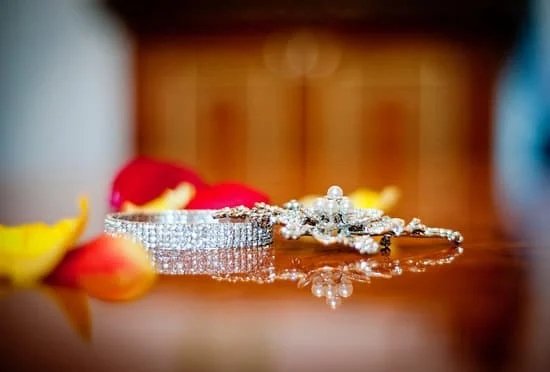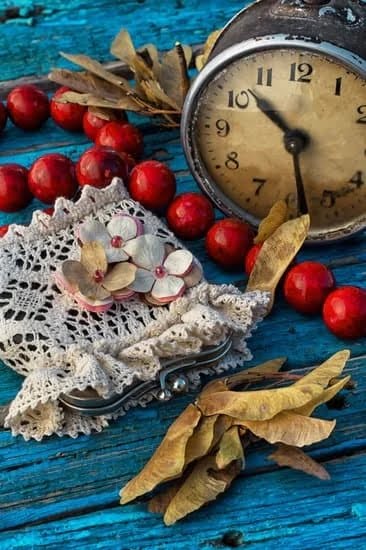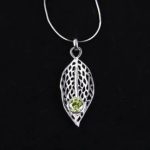Vintage fine jewelry is a treasure trove of history, craftsmanship, and beauty. Whether you are a collector, seller, or simply curious about the worth of your heirloom pieces, understanding how to accurately price vintage fine jewelry is essential. In this article, we will explore the intricate process of evaluating and determining the value of vintage fine jewelry, from understanding its qualities to utilizing appraisals and evaluations.
When it comes to pricing vintage fine jewelry, there are various factors to consider in order to arrive at an accurate value. This includes understanding the historical significance and market trends, evaluating the material and gemstone quality, considering brand and designer influence, assessing rarity and condition, as well as utilizing professional appraisals.
In the following sections, we will delve into each aspect of pricing vintage fine jewelry in depth. By the end of this article, you will have a comprehensive understanding of how to navigate the pricing process for vintage fine jewelry with confidence and expertise. Let’s unravel the mysteries behind appraising these timeless pieces and unlocking their true worth.
Understanding the Qualities of Vintage Fine Jewelry
Vintage fine jewelry holds a special place in the hearts of collectors and enthusiasts due to its unique qualities. When it comes to understanding the intrinsic value of vintage fine jewelry, there are several important factors to consider.
First and foremost, one must take into account the materials used in crafting the piece. Vintage fine jewelry often features high-quality metals such as gold, silver, or platinum, which contribute to its enduring appeal. Additionally, the presence of precious gemstones such as diamonds, rubies, emeralds, and sapphires can greatly enhance the value of vintage pieces.
Furthermore, the craftsmanship and design of vintage fine jewelry play a significant role in determining its worth. Pieces that exhibit intricate detailing, innovative techniques, and timeless aesthetics often command higher prices in the market. Understanding these qualities allows sellers to effectively communicate the unique attributes of their vintage fine jewelry to potential buyers.
Moreover, vintage fine jewelry is characterized by its historical significance and timeless appeal. Whether it’s Art Deco pieces from the 1920s or Mid-Century Modern designs from the 1950s, each era brings forth distinct styles and influences that contribute to the overall allure of the jewelry. Understanding these qualities allows sellers to accurately convey the cultural and artistic value of their vintage pieces to discerning buyers.
- Materials used in crafting
- Craftsmanship and design
- Historical significance and timeless appeal
Researching the History and Market Trends of Vintage Fine Jewelry
Historical Significance and Influence
Vintage fine jewelry holds a significant historical value that often influences its pricing. Understanding the historical significance of a piece can provide insight into its rarity, craftsmanship, and cultural relevance. By researching the history of vintage fine jewelry, sellers can better communicate its story and attract potential buyers who appreciate the unique heritage behind each piece.
Market Trends and Demand
To effectively price vintage fine jewelry, it is essential to stay informed about current market trends and demand. Like any other luxury item, the value of vintage fine jewelry is influenced by consumer preferences, fashion trends, and market demand. By keeping an eye on popular styles, materials, and design periods, sellers can adjust their pricing strategy to align with the latest market tendencies. Understanding what collectors are currently seeking can also help determine the ideal price point for vintage pieces.
Utilizing Historical Data and Sales Comparisons
One effective method for determining the price of vintage fine jewelry is to analyze historical sales data and compare similar pieces. This approach allows sellers to gauge the current market value based on past transactions while considering factors such as age, condition, provenance, and design aesthetics. By using this data as a benchmark, sellers can confidently set competitive prices that accurately reflect the worth of their vintage fine jewelry.
Determining the Material and Gemstone Quality
When it comes to pricing vintage fine jewelry, one of the most crucial factors to consider is the material and gemstone quality. The intrinsic value of a piece of vintage fine jewelry lies in the materials used, as well as the quality and rarity of the gemstones. Determining these aspects accurately will contribute significantly to setting the right price for vintage fine jewelry.
To evaluate the material and gemstone quality, it is essential to have a basic understanding of different types of metals and gemstones commonly used in vintage fine jewelry. Precious metals such as gold, silver, and platinum have different market values based on their purity and weight. Additionally, various gemstones like diamonds, rubies, sapphires, and emeralds vary in value depending on factors such as color, clarity, cut, and carat weight.
Furthermore, conducting thorough research and seeking expert opinion can provide valuable insights into the material and gemstone quality of vintage fine jewelry. Consult with reputable jewelers or appraisers who specialize in vintage pieces to gain a deeper understanding of the specific characteristics that contribute to the overall quality and value of the jewelry. By taking these steps, you can ensure that you accurately assess the material and gemstone quality when determining the pricing of vintage fine jewelry.
Considering the Brand and Designer Influence
When pricing your vintage fine jewelry, it’s important to consider the brand and designer influence. Certain brands and designers hold a special place in the history of jewelry making and have a significant impact on the value of a piece. For example, pieces from renowned designers such as Cartier, Tiffany & Co. and Van Cleef & Arpels often command higher prices due to their reputation for quality and craftsmanship.
One way to determine the brand and designer influence is through thorough research. Look into the history of the brand or designer, their signature style, and any notable collections or pieces they are known for. Understanding the significance of a particular brand or designer in the world of vintage fine jewelry will provide valuable insight into how potential buyers perceive and value these pieces.
Additionally, it’s important to evaluate any markings or signatures on the jewelry that indicate its origin or designer. Pieces that are signed by a well-known maker can significantly increase their value in the eyes of collectors and enthusiasts. Taking note of these details can help you accurately assess the brand and designer influence when pricing your vintage fine jewelry.
It’s also worth noting that some lesser-known designers or artisanal brands may also carry significant value if they have a niche following or are considered rare finds within the vintage jewelry market. All these considerations should be taken into account when determining how to price vintage fine jewelry with regards to its brand and designer influence.
| Brand/Designer | Influence on Value |
|---|---|
| Cartier | Highly influential; commands premium prices |
| Tiffany & Co. | Renowned for quality; reflects in higher valuation |
| Van Cleef & Arpels | Prestigious reputation translates to increased worth |
Assessing the Condition and Rarity of the Vintage Fine Jewelry
When it comes to pricing vintage fine jewelry, assessing the condition and rarity of each piece is crucial. The following are some key factors to consider when evaluating the condition and rarity of vintage fine jewelry:
- Condition: One of the most important aspects to consider when pricing vintage fine jewelry is its condition. Signs of wear and tear, such as scratches, dents, or discoloration, can significantly affect the value of the piece. Additionally, it’s important to take into account any potential repairs or restoration work that may have been done on the jewelry.
- Rarity: The rarity of a vintage fine jewelry piece can also have a major impact on its price. Factors such as limited production runs, unique designs, or discontinued styles can make a piece more valuable to collectors. It’s important to research and understand the historical context and production details of each piece to determine its rarity in the market.
- Provenance: Another aspect that can contribute to the rarity and value of vintage fine jewelry is its provenance. Pieces with an interesting history or with a connection to a notable person or event may command higher prices in the market.
Utilizing Appraisals and Evaluations
Appraisals and evaluations play a crucial role in the pricing process of vintage fine jewelry. These professional assessments provide valuable insights into the authenticity, quality, and market value of the jewelry, helping sellers determine a fair and competitive price.
Hiring a Certified Appraiser
When seeking an appraisal for vintage fine jewelry, it is important to work with a certified and experienced appraiser who specializes in antique and vintage pieces. Look for appraisers who have a strong reputation within the industry and are affiliated with recognized appraisal organizations.
Understanding the Appraisal Report
Once the jewelry has been evaluated, the appraiser will provide an official report detailing their findings, including information about the materials, craftsmanship, provenance, and current market value. This report serves as a valuable tool for both sellers and potential buyers.
Reappraising Over Time
It’s important to note that the value of vintage fine jewelry can fluctuate over time due to changes in market demand, trends, and industry fluctuations. As such, periodic reappraisals may be necessary to ensure that the pricing remains accurate and reflective of current market conditions.
Utilizing appraisals and evaluations is essential in understanding how to price vintage fine jewelry accurately. By working with certified professionals, gaining insight from appraisal reports, and staying informed about market trends through periodic reassessments, sellers can confidently set the right price for their exquisite vintage pieces.
Setting the Right Price for Vintage Fine Jewelry
Determining the price for vintage fine jewelry can be a challenging task, as it requires a deep understanding of various factors that contribute to its overall value. One crucial aspect of setting the right price for vintage fine jewelry is to consider the current market trends and demand for such items. This involves researching auction results, sales records, and the prices of similar pieces in order to gauge an accurate value.
Another important factor in pricing vintage fine jewelry is assessing the material and gemstone quality. For example, understanding the purity and weight of precious metals, such as gold or platinum, as well as evaluating the cut, clarity, color, and carat weight of gemstones like diamonds or sapphires is essential in determining their worth.
In addition to these factors, considering the brand and designer influence on vintage fine jewelry plays a significant role in pricing. Pieces from renowned designers or prestigious brands often command higher prices due to their exclusivity and craftsmanship.
It’s also crucial to assess the condition and rarity of the vintage fine jewelry – items in pristine condition or those that are rare or unique are typically priced higher. Utilizing professional appraisals and evaluations can provide expert insights into these elements which can ultimately guide you in setting a fair and competitive price for vintage fine jewelry.
| Factors to Consider | Details |
|---|---|
| Market Trends and Demand | Researching auction results, sales records, and comparable prices |
| Material-Gemstone Quality | Evaluating purity and weight of precious metals, as well as gemstone cut, clarity, color, & carat weight |
| Brand-Designer Influence | Evaluating prestige & craftsmanship from renowned designers/brands |
| Condition-Rarity Assessment | Determining item’s condition & level of rarity or uniqueness |
Conclusion
In conclusion, pricing vintage fine jewelry requires a comprehensive understanding of its value, qualities, history, market trends, material and gemstone quality, brand and designer influence, condition, rarity, as well as utilizing professional appraisals and evaluations. It is essential to consider all these factors in order to set the right price for vintage fine jewelry.
When determining the price of vintage fine jewelry, it is important to remember that each piece is unique and holds its own history and significance. By conducting thorough research on the specific piece or style of jewelry, one can gain valuable insights into its market demand and historical context. Understanding the story behind each vintage piece can greatly influence its perceived value.
Furthermore, obtaining professional appraisals and evaluations from reputable sources can provide an objective assessment of the vintage fine jewelry’s worth. This can help sellers establish a fair market value while also giving buyers confidence in their investment. Ultimately, navigating the pricing process for vintage fine jewelry requires attention to detail and a deep appreciation for the craftsmanship and timeless beauty of these exquisite pieces.
Frequently Asked Questions
How Do You Evaluate Antique Jewelry?
Evaluating antique jewelry involves considering factors such as the craftsmanship, materials used, historical significance, and current market demand. An appraiser or expert may also look at the condition of the piece, any unique features or markings, and its overall aesthetic appeal.
It’s important to take into account the provenance and rarity of the antique jewelry in order to determine its value.
Is It Worth Selling Old Jewelry?
Whether it’s worth selling old jewelry depends on a variety of factors including its condition, market demand for similar pieces, sentimental value, and potential financial gain. If the jewelry is in good condition and has a strong resale value, it may be worth selling.
However, if the piece has sentimental value or is a family heirloom, you may prefer to keep it regardless of its market worth.
What Years Are Considered Vintage Jewelry?
Vintage jewelry typically refers to pieces that were made between 1910 and 1990. This time frame encompasses different design eras such as Art Deco, Retro, Mid-Century Modern, and more.
It’s important to note that “vintage” can also be used more broadly to describe anything that is at least 20 years old from the current year. So while specific years are considered vintage in terms of fashion and design trends, from a strict age perspective, anything from about two decades ago could be considered “vintage”.

Welcome to my jewelry blog! My name is Sarah and I am the owner of this blog.
I love making jewelry and sharing my creations with others.
So whether you’re someone who loves wearing jewelry yourself or simply enjoys learning about it, be sure to check out my blog for insightful posts on everything related to this exciting topic!





